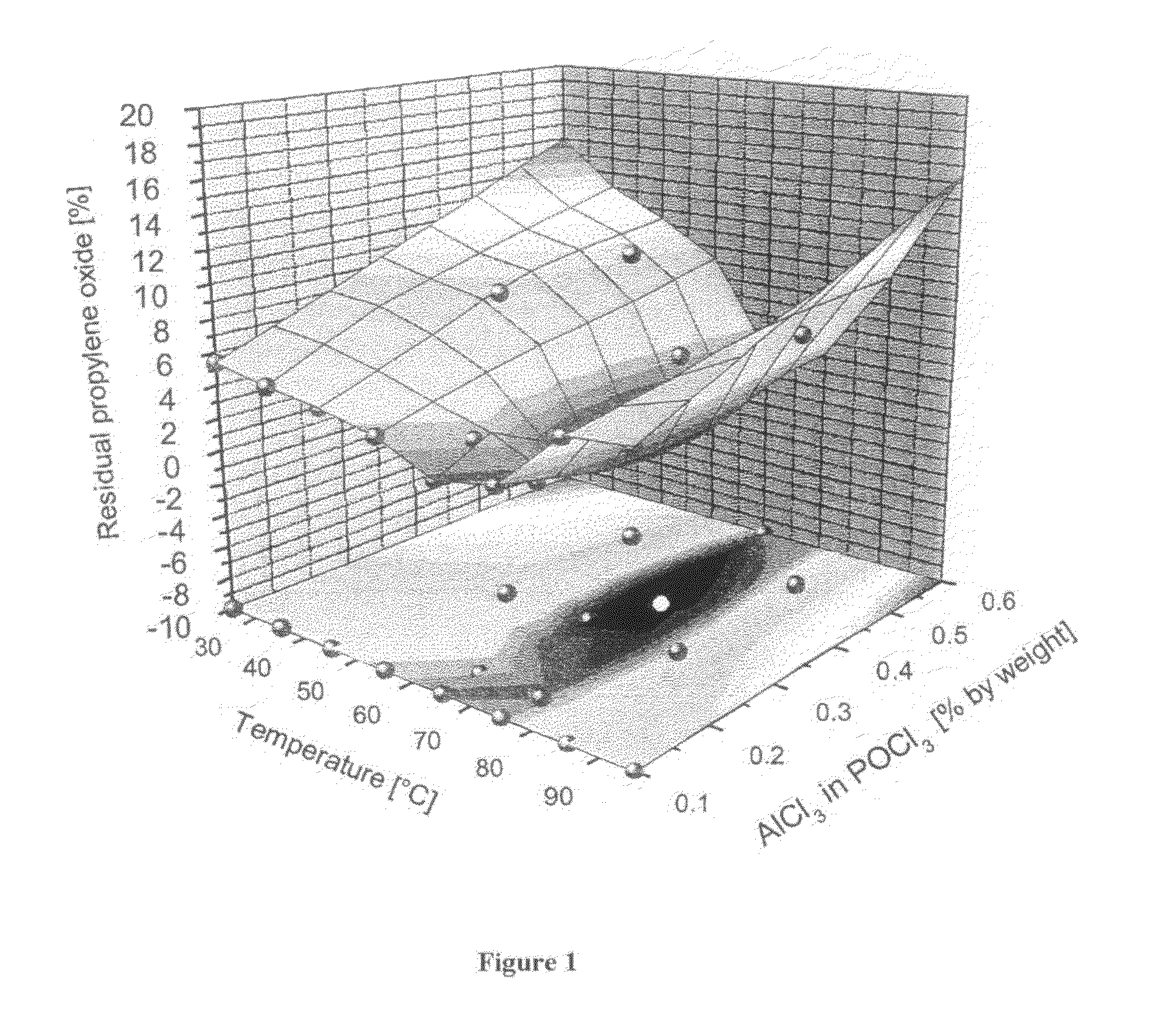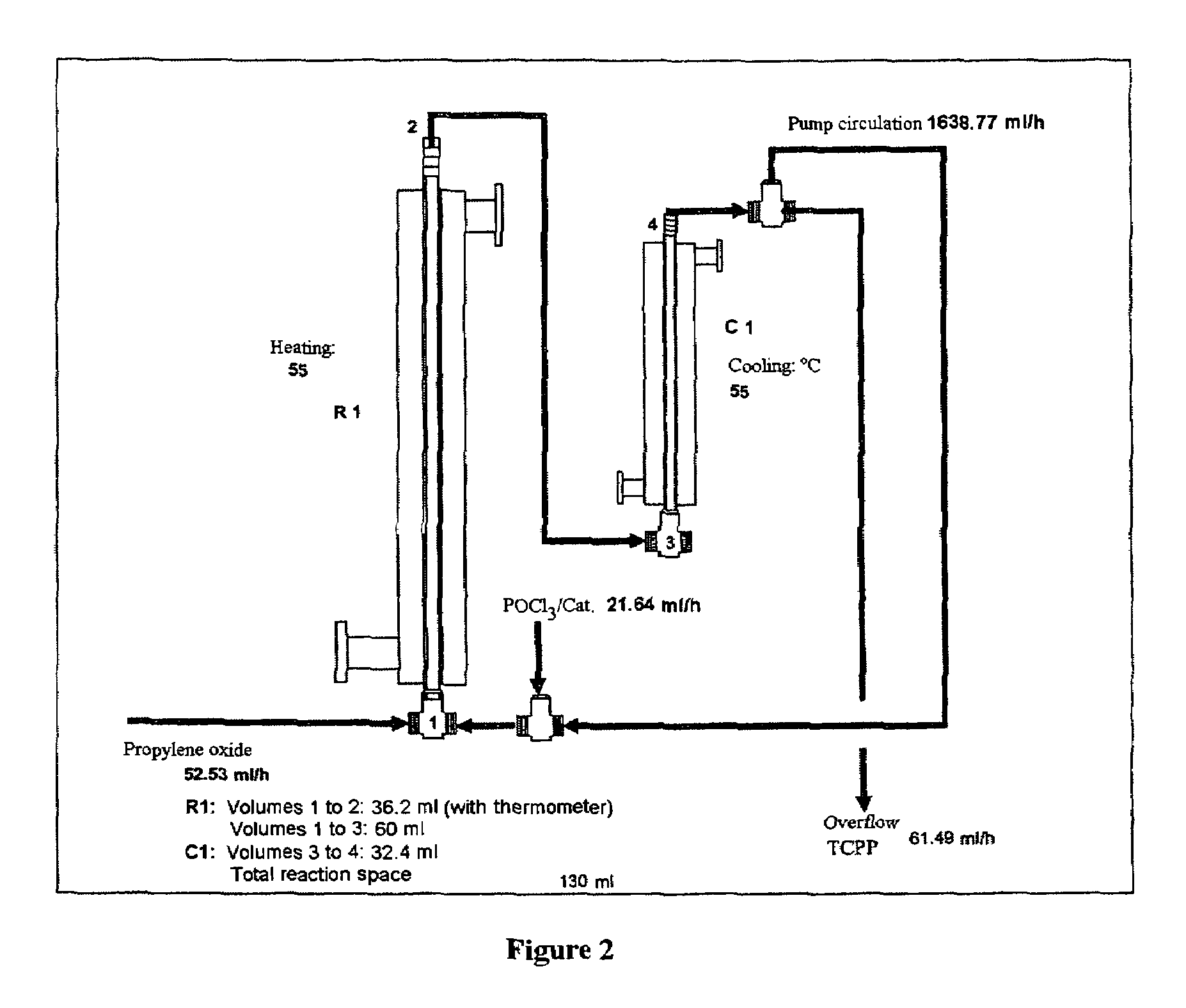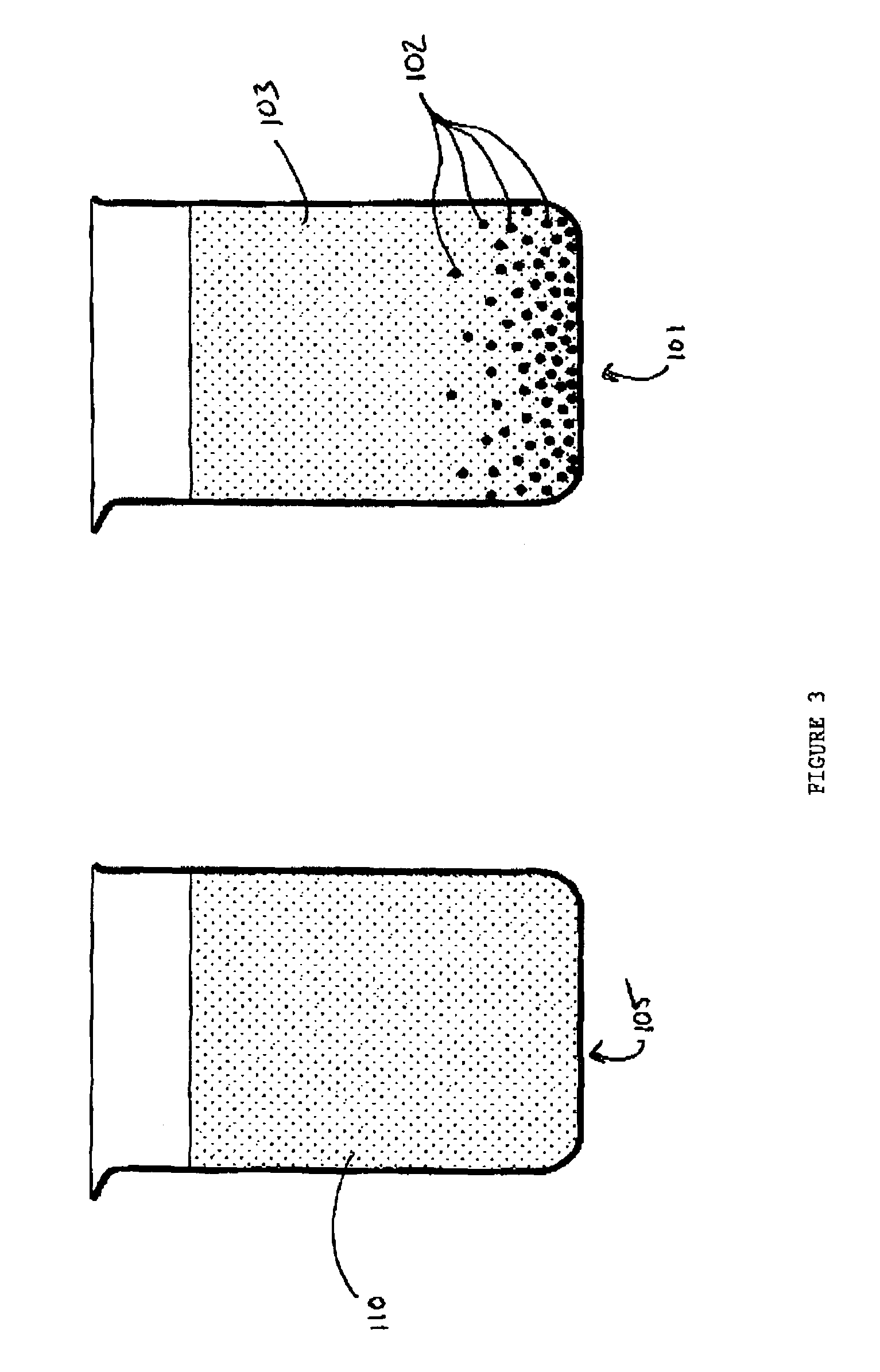Preparation of phosphorus-containing propoxylation products by using aluminium trichloride
a technology of aluminium trichloride and phosphorus, which is applied in the field of preparation of phosphorus-containing alkoxylation products, can solve the problems of destroying or deactivating catalysts, deteriorating space/time yield, and product loss, and achieve the effect of preserving resources
- Summary
- Abstract
- Description
- Claims
- Application Information
AI Technical Summary
Benefits of technology
Problems solved by technology
Method used
Image
Examples
example 1
Synthesis of tris(chloropropyl)phosphate (TCPP)
[0039]The reactor (FIG. 2) charged with tris(chloropropyl) phosphate was fed continuously with propylene oxide (52.5 ml / h) and aluminium trichloride in solution in phosphorus oxychloride (21.6 ml / h). The reaction was carried out with a pump circulation rate of 1638 ml / h. The catalyst concentration was varied, as was the reaction temperature. After a run time of 6 h, samples of the tris(chloropropyl) phosphate discharged were taken, and the product composition was analysed by gas chromatography. Table 1 shows the conversion of the reaction, measured as residual propylene oxide (GC%), and the isomer composition, both as a function of the catalyst concentration and the reaction temperature. A depiction of the propylene conversion from Table 1 in graph form can be seen in FIG. 1.
[0040]
TABLE 1% by weightGC % residualTemperatureAlCl3 inpropylene[° C.]POCl3oxide(I)*(II)*Ratio (I) / (II)(III)*(IV)*TCPP ether*550.1513.181.017.64.581.20.020.18650.1...
example 2
Synthesis of tris(chloropropyl) phosphate (TCPP)
[0041]The reactor (FIG. 2) charged with tris(chloropropyl) phosphate was fed continuously with propylene oxide (52.5 ml / h) and the catalyst titanium tetrachloride or aluminium chloride, in solution in phosphorus oxychloride (21.6 ml / h). The reaction was carried out with a pump circulation rate of 1638 ml / h in reactor 1. The catalyst concentration was varied, as was the reaction temperature. After 6 h in each case a sample of 250 ml of tris(chloropropyl) phosphate was taken. Following removal of volatile constituents under reduced pressure on a rotary evaporator (80° C., 15 mbar, 0.5 h), the product composition was analysed by gas chromatography (GC) (Table 2).
[0042]Subsequently the products were purified in a three-stage water scrub. This was done by combining the sample of 250 ml of 5-molar HCl in a vol / vol ratio of 1:1 at 90° C. Following phase separation, the organic phase was washed with water, 0.2 m aqueous sodium hydroxide soluti...
example 3
Scrubbing of TCPP
[0045]Example 2 (reaction conditions at 65° C., 0.34 mol % catalyst in POCl3) was repeated and the crude TCPP from the aluminium trichloride or titanium tetrachloride catalysis was subjected, in contrast to Example 2, to a single-stage scrub with 0.2 N NaOH at 90° C. This was done by admixture of 250 ml of crude TCPP with the same volume of 0.2 N NaOH. After phase separation, the organic phases were dried on a rotary evaporator for 2 h at 80° C. and 15 mbar and analysed by gas chromatography (Table 4).
[0046]The workup of TCPP from the titanium catalysis led to formation of insoluble constituents 102 in the aqueous phase 103, as illustrated in the right beaker 101. In contrast, for the aluminium trichloride-catalysed TCPP a transparent aqueous phase 110 was obtained which was easy to separate off, as illustrated in the left beaker 105 (FIG. 3, left). The characterization of the aqueous phase is given in Table 5.
[0047]
TABLE 4After scrubProduct spectrumComparativeGC [%...
PUM
| Property | Measurement | Unit |
|---|---|---|
| temperatures | aaaaa | aaaaa |
| temperature | aaaaa | aaaaa |
| temperature | aaaaa | aaaaa |
Abstract
Description
Claims
Application Information
 Login to View More
Login to View More - R&D
- Intellectual Property
- Life Sciences
- Materials
- Tech Scout
- Unparalleled Data Quality
- Higher Quality Content
- 60% Fewer Hallucinations
Browse by: Latest US Patents, China's latest patents, Technical Efficacy Thesaurus, Application Domain, Technology Topic, Popular Technical Reports.
© 2025 PatSnap. All rights reserved.Legal|Privacy policy|Modern Slavery Act Transparency Statement|Sitemap|About US| Contact US: help@patsnap.com



